What is Flexible Packaging? How It’s Revolutionizing Modern Packaging Solutions
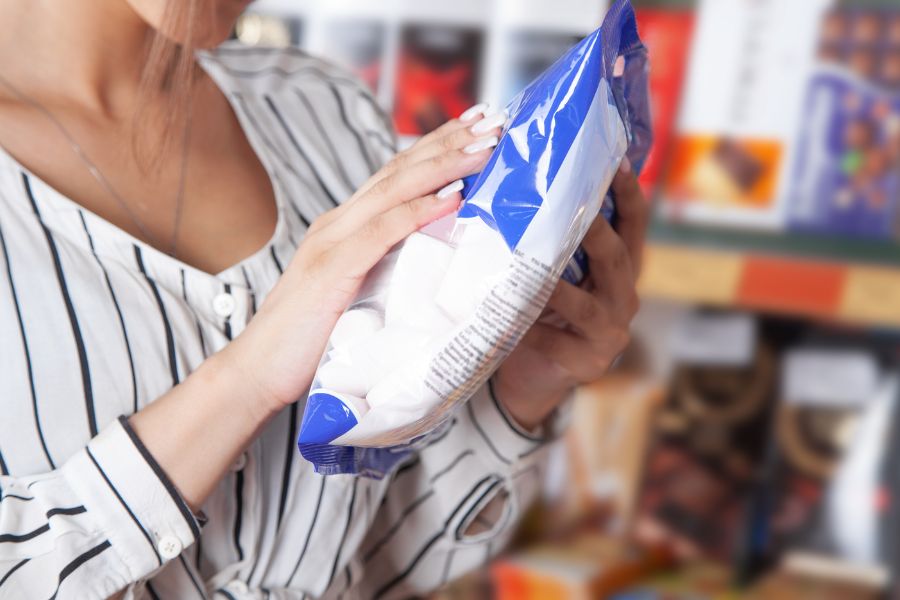
Flexible packaging is transforming industries from snacks to pharmaceuticals with its efficiency in storage, transportation, and presentation. This guide covers its benefits, types, applications, sustainability, and latest innovations.
The global flexible packaging market was valued at over $270 billion in 2023 and is projected to grow at a 4.8% CAGR through 2030, driven by rising demand in the medical and pharmaceutical sectors. The food industry is the largest market for flexible packaging, accounting for about 50% of shipments.
As businesses increasingly adopt flexible packaging solutions, this article provides key insights for packaging professionals and business owners looking to optimize product presentation and sustainability.
What is flexible packaging?
Flexible packaging is a versatile solution made from easily bendable or yielding materials that adapt to the shape and size of its contents.
Common materials include paper, plastic, film, and foil, often combined for durability and functionality. These packages come in various forms, such as bags, pouches, films, liners, overwraps, rollstock, lidding, sleeves, and wraps.
Some key benefits include lightweight construction, cost-efficiency, and customizable branding. It can also extend the shelf life of perishable goods and protect them from damage.
Flexible packaging is used in a variety of industries, including food and beverage, pharmaceuticals, and personal care. It’s a popular choice for businesses because it meets consumer demands for convenience, safety, and eco-friendliness.
What are the advantages of flexible packaging?
Flexible packaging is quickly gaining popularity among businesses and consumers alike due to its many advantages. It offers cost savings, promotes sustainability, and enhances product protection while improving branding. Here’s why industries are making the switch.
Optimized Shipping and Storage Efficiency
Flexible packaging is lightweight and space-saving leading to lower transportation and warehousing costs while reducing carbon emissions, making logistics more efficient and eco-friendly.
Enhanced Product Protection
With strong barriers against moisture, light, oxygen, and contaminants, flexible packaging keeps products fresh, reduces waste, and minimizes damage during shipping and storage.
Reduced Environmental Impact
Flexible packaging is a sustainable alternative to rigid packaging, as it requires fewer materials and includes recyclable and eco-friendly options. Although flexible packaging is not always recyclable through curbside programs, specialized facilities can process these materials, contributing to a circular economy.
Promote Sustainability
To further reduce waste, many eco-friendly brands now offer refillable products, allowing consumers to buy a bottle once and purchase refills in pouches. This approach not only supports sustainability but also promotes responsible consumer behavior.
Improved Shelf Appeal and Branding
With high-quality printing and customizable designs, flexible packaging enhances product visibility, offers optimal decoration surface area, attracts consumers, and can strengthen brand identity, driving sales and market presence.
Versatile Compatibility
Ideal for liquids, solids, powders, and granules, flexible packaging adapts to various industries and product types, simplifying inventory management and production processes.
What are different types of flexible packaging?
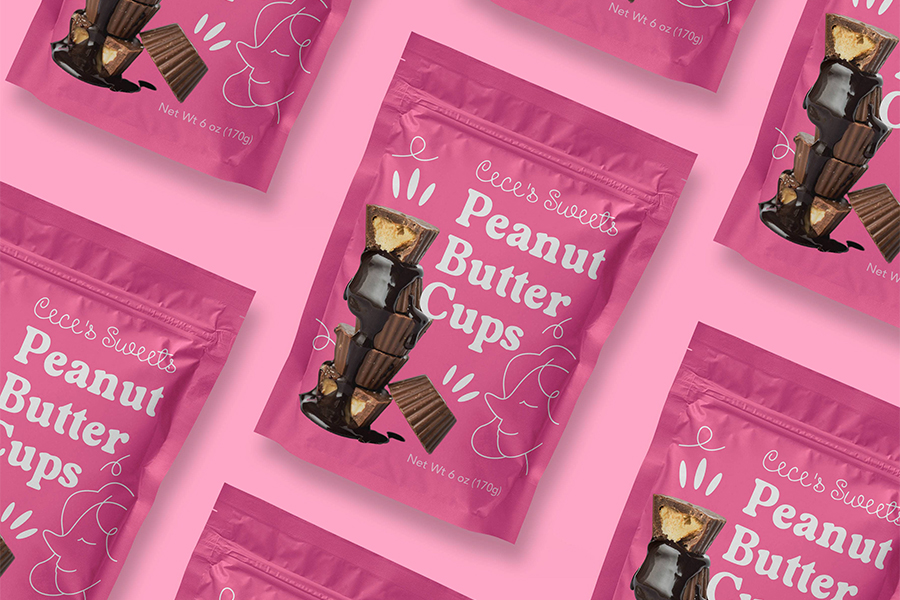
Flexible packaging comes in various forms, such as pouches, bags, wrappers, laminates, labels, and sleeves, all designed for specific products. These options offer durability, convenience, and branding potential.
Pouches
Pouches are a versatile and space-saving packaging option available in various forms, including stand-up pouches, spouted pouches, and resealable pouches. They are widely used for snacks, beverages, pet food, and personal care items, offering lightweight durability, extended shelf life, and premium branding opportunities.
Bags
Flexible bags, made from plastic, paper, or fabric, are commonly used for grocery, retail, and industrial applications. They can feature different closure mechanisms, such as zippers, drawstrings, or adhesive seals, making them adaptable for various industries while ensuring ease of use and storage.
Tubes
Tubes are a widely used flexible packaging solution, particularly for products like toothpaste, lotions, ointments, hair care items, sunblock, and prescription medications. They come with various types of closures, such as flip tops, spouts, and child-resistant mechanisms, and can feature orifices of different shapes and sizes.
Wrappers and Laminates
Wrappers and laminated films provide high-barrier protection against moisture, light, and contaminants, making them ideal for candy, granola bars, chocolate, and medical products. Laminates combine multiple layers of materials like plastic, foil, and paper to deliver optimal freshness, durability, and brand visibility.
Design and Custom Flexible Packaging
Custom packaging plays a pivotal role in enhancing brand recognition, engaging consumers, and driving sales. A 2018 survey revealed that 72% of American consumers are influenced by packaging design in their purchasing decisions, and 67% consider the materials used in packaging. Furthermore, 81% of consumers have tried a new product because its packaging caught their eye, and 63% have repurchased a product due to its packaging’s appearance.
Customization enables brands to create unique shapes, vibrant colors, and distinctive finishes, significantly improving shelf appeal and setting products apart in a crowded marketplace. By investing in tailored packaging solutions, businesses can effectively capture consumer attention and foster brand loyalty.
Flexible packaging labels
Labels play a crucial role in branding, compliance, and consumer engagement. They adhere directly to the packaging surface and come in a variety of styles, from cost-effective black thermal labels to high-end designs with textures, patterns, and special effects.
Designed for durability, flexible packaging labels resist moisture, heat, and handling while maintaining clarity and visual appeal. Common types include:
- Pressure-sensitive labels – Easy to apply with strong adhesion
- Shrink-sleeve labels – Provide 360-degree branding coverage
- Heat-transfer labels – Offer seamless integration with packaging material
Flexible packaging printing
Direct printing on flexible packaging maximizes branding space and ensures a cohesive look. Printing methods vary based on packaging material, with the most common techniques being:
- Digital printing – Ideal for short runs and custom designs with vibrant colors
- Flexographic printing – Cost-effective for high-volume production
- Rotogravure printing – Delivers high-detail, premium-quality graphics
- Lithographic printing – Used for specialty applications requiring precision, most commonly used on labels
Advanced printing technologies enhance shelf appeal and sustainability, with eco-friendly inks and water-based coatings meeting consumer demand for greener packaging solutions.
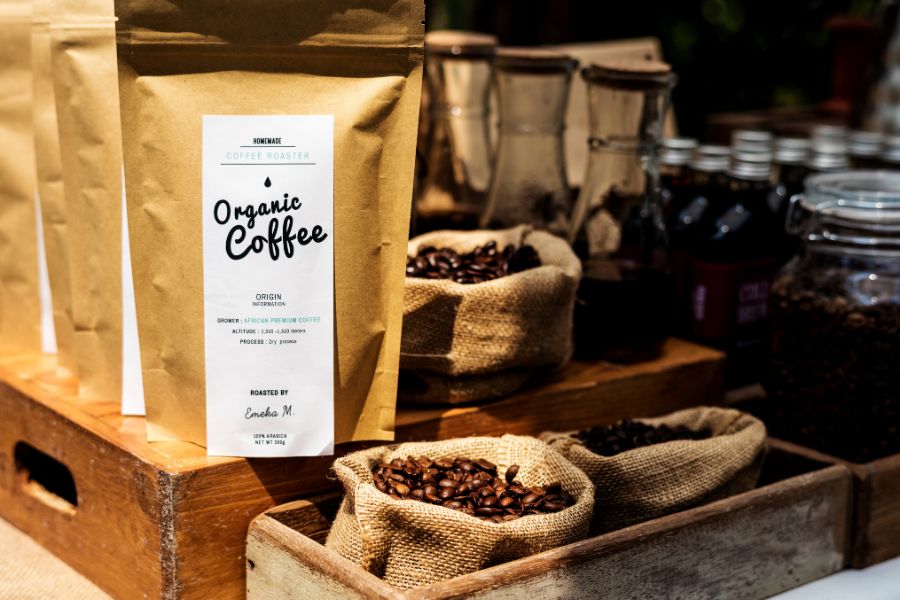
Common Materials Used for Flexible Packaging
Flexible packaging materials are designed to meet diverse product requirements across industries like food and beverage, pharmaceuticals, and personal care. The right material choice ensures durability, product protection, and sustainability.
Plastics
- Polyethylene (PE): A widely used, moisture-resistant, flexible, and cost-effective material found in plastic bags and pouches.
- Polypropylene (PP): Offers clarity, heat resistance, and durability, commonly used for snack bags and food containers.
- Polyethylene Terephthalate (PET): A strong and durable material known for high-barrier properties and recyclability, ideal for beverage bottles and food trays. The recycled material is known as RPET.
- Polyvinyl Chloride (PVC): Once common in flexible packaging, PVC use has declined due to environmental concerns.
Eco-Friendly & Specialty Materials
- Paper: A sustainable, biodegradable option widely used for paper bags and retail packaging.
- Cellophane: A transparent, biodegradable, moisture-resistant material often used for candy and gift wrapping.
- Metalized Films: Thin plastic films coated with metal to provide superior barrier protection for snacks, coffee, and other products requiring an extended shelf life.
- Barrier Coatings: Applied to flexible packaging materials to enhance resistance to moisture, oxygen, and contaminants, preserving product freshness.
- Adhesive Layers: Essential for sealing and bonding different layers, ensuring packaging integrity and resealability.
By choosing the right materials, businesses can enhance product protection, extend shelf life, and align with sustainability goals.
Applications of Flexible Packaging
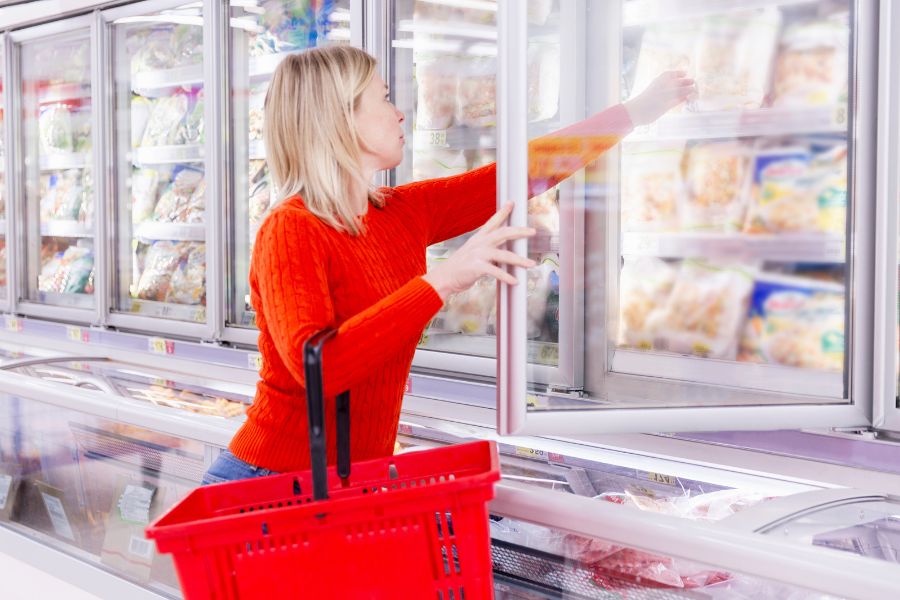
Flexible packaging is widely used across industries for its durability, lightweight design, and ability to extend product shelf life. Here’s how different sectors benefit from it:
Food and Beverage
Flexible packaging is ideal for snacks, frozen foods, coffee, tea, and beverages, preserving freshness and reducing food waste with high-barrier protection.
- Snack Pouches: Stand-up pouches improve shelf visibility and resealability for snacks like chips and nuts.
- Coffee & Tea Pouches: Airtight barriers preserve flavor and aroma; degassing valves release gas while keeping air out.
- Beverage Pouches & Sachets: Lightweight, portable, and often include spouts or straws for easy consumption. Pouches are also used as secondary packaging to hold single-use sachets.
- Frozen Food Bags: Barrier-protected pouches maintain texture and taste, while resealable features help with portion control.
Personal Care and Cosmetics
Used for lotions, wipes, and beauty products, flexible packaging offers convenience, portion control, and premium branding through custom shapes and high-quality printing.
- Shampoo & Conditioner: Pouches with spouted closures for refilling products reduce waste and offer consumer convenience and ease of use.
- Face Mask Packaging: Flexible pouches and tubes are used for individual or multi-pack face mask products, providing protection and convenience.
- Tubes: Tubes offer squeezable, durable packaging that provides controlled dispensing and a range of sizes, from travel-friendly to larger bulk sizes.
- Single-Use Sachets: Single-use sachets are a convenient way for consumers to sample a product. Commonly used for skincare and hair care products.
Pharmaceuticals and Nutraceuticals
Provides tamper-evident, moisture-resistant, and single-dose packaging solutions for medicines, vitamins, and supplements, ensuring product safety and compliance.
- Blister Packs: Protects individual tablet and capsule doses while ensuring safety.
- Supplement Pouches: Convenient daily dosing for vitamins and nutraceuticals.
- Cough Drop Pouches and Wraps: Resealable pouches keep lozenges fresh and easily accessible, while individually wrapped lozenges protect the product from contamination.
Household Products
Common for detergents, cleaning wipes, and air fresheners, flexible packaging is lightweight, spill-proof, and designed for easy dispensing and storage.
- Detergent Pouches: Spouted pouches allow for easy pouring and storage of liquid and powder detergents.
- Cleaning Wipes Packs: Flexible packaging for cleaning wipes ensures the product remains moist and ready for use when sealed properly and used within a certain amount of time.
Industrial and Chemical Products
Flexible packaging safely contains automotive fluids, adhesives, and agricultural chemicals, offering high-strength barriers and leak-proof designs for hazardous materials.
- Chemical Drum Liners: Flexible liners are used inside large chemical drums to protect the contents from contamination and corrosion.
- Industrial Film Rolls: Rolls of flexible packaging film are used for wrapping and protecting large items during shipping.
- Agricultural Seed Bags: Flexible bags are used for packaging seeds, fertilizers, and agricultural products, providing durability and protection.
- Oil & Lubricant Pouches and Sachets: Portable, mess-free dispensing for automotive and industrial applications.
Pet Products
Perfect for pet food, treats, and supplements, flexible packaging maintains freshness, prevents contamination, and includes resealable features for convenience.
- Pet Food Pouches: Stand-up bags and resealable pouches maintain freshness and portion control.
- Cat Litter Bags: Durable, leak-proof solutions for handling and storing cat litter.
- Pet Treat Packaging: Easy-to-open and resealable pouches extend treat shelf life.
Ensuring Safety, Compliance, and Premium Quality in Flexible Packaging
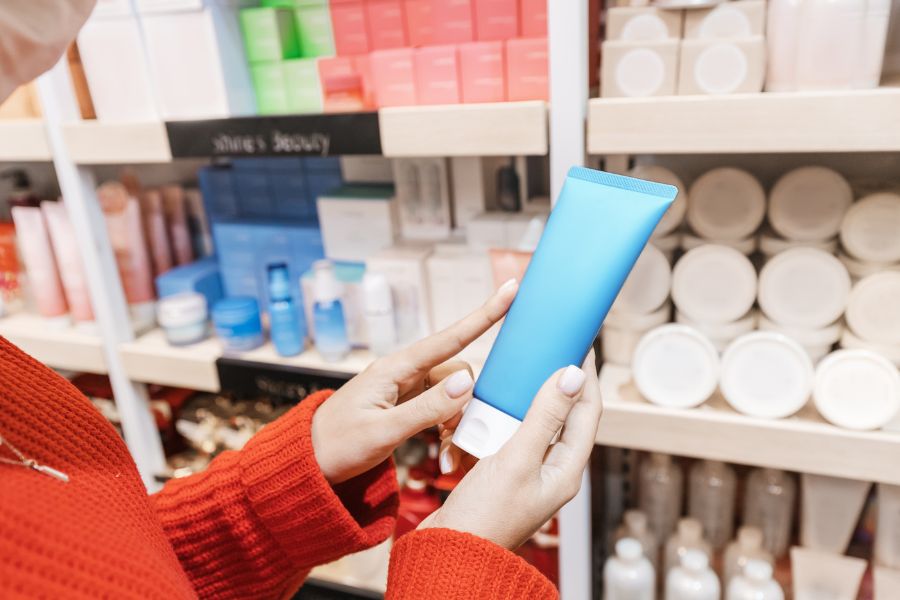
Balancing regulatory compliance, product safety, and environmental responsibility is essential in flexible packaging.
- Stay Informed on Regulations: Regularly review and adhere to local and international packaging standards and regulations to ensure product safety and avoid legal issues.
- Prioritize Sustainable Materials: Choose eco-friendly materials and designs that meet environmental regulations and appeal to eco-conscious consumers.
- Implement Quality Control Measures: Establish rigorous testing protocols and quality control measures to maintain high-quality packaging that complies with safety standards.
By integrating these practices, industry professionals can effectively navigate the complexities of compliance, safety, and sustainability in flexible packaging.
The Future of Flexible Packaging
The flexible packaging industry is undergoing rapid transformation, driven by sustainability, innovation, and efficiency. Key advancements are shaping the future of packaging to enhance product protection, consumer engagement, and environmental responsibility.
Sustainability at the Forefront
Brands are prioritizing eco-friendly materials, recyclability, and biodegradable solutions to meet consumer demand for low-impact packaging. Expect more compostable films, mono-material structures, and reduced plastic use in packaging designs.
Advanced Barrier Technologies
Next-generation barrier coatings and films are improving moisture, oxygen, and UV protection, extending product shelf life while maintaining recyclability.
Innovative Closures & Dispensing Systems
New resealable, easy-pour, and child-resistant closures are enhancing convenience, safety, and usability across food, pharmaceutical, and household packaging.
Health & Safety Considerations
Packaging designs are evolving to ensure product integrity and consumer well-being, with a focus on tamper-evidence, hygienic materials, and compliance with global safety standards.
Automation & Efficiency
Manufacturers are adopting automated production, digital printing, and AI-driven quality control to reduce costs, increase speed, and minimize waste. Automation and efficiency will play a significant role in optimizing production processes and reducing costs to meet the demands of an ever-evolving market.
Smart & Interactive Packaging
Technology-driven features like QR codes, augmented reality (AR), and NFC chips are improving brand engagement, traceability, and customer experience by offering real-time product information and interactive experiences.
With these advancements, the global flexible packaging market is projected to reach $389.07 billion by 2032, growing at a CAGR of 4.5% from 2025 to 2032, according to Market Research Future. The future of flexible packaging is smarter, more sustainable, and consumer-focused, ensuring brands stay ahead in an ever-evolving market.
Embrace Flexible Packaging Solutions with Paramount Global
Flexible packaging continues to revolutionize industries with its versatility, sustainability, and efficiency. As brands embrace eco-friendly materials, smart packaging, and advanced barrier technologies, the industry is set for continued growth and innovation.
Businesses that invest in cutting-edge packaging solutions will stay competitive by enhancing product protection, reducing environmental impact, and improving consumer engagement.
At Paramount Global, we’ve been delivering complete packaging and supply chain solutions since 1976. Whether you need flexible or rigid packaging, our expertise ensures streamlined, cost-effective solutions tailored to your needs. Contact us today to explore how we can support your business.
Not ready to talk to someone? Explore our catalog to get the inspiration flowing.
This article was originally published on October 11, 2023, and updated on April 3, 2025.
Hayley is a marketing professional and copywriter with a background in crafting content for a diverse range of industries. She has been writing about packaging and supply chain logistics for Paramount Global since 2022. She specializes in explaining complex topics in a clear and engaging way and is an advocate for sustainability in packaging and supply chain management.
Read More
For over forty years, Paramount has been delivering perfectly integrated packaging and supply chain solutions.
